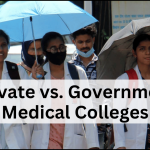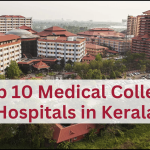Healthcare costs are rising. Some medical treatments cost a fortune. Expensive treatments involve advanced technology. Specialized doctors perform these procedures. Hospital stays can be long and costly. Some therapies require rare medicines. Complex procedures add to the expense. Here is a list of the top 10 most expensive medical treatments.
Zolgensma – Rs 174 Crore
Zolgensma is the most expensive drug.
It treats spinal muscular atrophy (SMA).
SMA is a rare genetic disorder.
The disease affects muscle control.
A single dose can prevent further damage.
Infants with SMA benefit from early treatment.
The treatment improves muscle movement.
It is a one-time gene therapy.
Treatment Cost Used For Zolgensma Rs 174 Crore Spinal muscular atrophy (SMA)
Luxturna – Rs 70 Crore
Luxturna is a gene therapy.
It treats inherited vision loss.
Patients suffer from a rare eye disease.
The disease causes blindness over time.
The treatment corrects the defective gene.
A one-time therapy helps restore vision.
The high cost is due to its effectiveness.
Treatment Cost Used For Luxturna Rs 70 Crore Inherited vision loss
Kymriah – Rs 39 Crore
Kymriah is a CAR T-cell therapy.
It treats leukemia in children and young adults.
The treatment modifies immune cells.
These modified cells fight cancer.
Kymriah is a one-time treatment.
It is different from chemotherapy.
The process is complex and costly.
Treatment Cost Used For Kymriah Rs 39 Crore Leukemia treatment
Skysona – Rs 249 Crore
Skysona is a gene therapy.
It treats cerebral adrenoleukodystrophy (CALD).
CALD is a rare brain disease.
The disorder leads to neurological decline.
Skysona corrects faulty genes.
A single dose helps prevent progression.
The treatment is extremely costly.
Treatment Cost Used For Skysona Rs 249 Crore Cerebral adrenoleukodystrophy
Hemgenix – Rs 290 Crore
Hemgenix is a gene therapy.
It treats hemophilia B.
Hemophilia B is a rare bleeding disorder.
Patients lack a crucial clotting protein.
Hemgenix helps the body produce the protein.
It reduces the need for lifelong treatments.
Regular injections are no longer required.
Treatment Cost Used For Hemgenix Rs 290 Crore Hemophilia B
Zokinvy – Rs 85 Crore
Zokinvy treats progeria syndrome.
Progeria causes rapid aging in children.
The disorder is extremely rare.
The drug slows down aging symptoms.
It helps increase the lifespan of children.
The treatment is expensive due to research costs.
Treatment Cost Used For Zokinvy Rs 85 Crore Progeria Syndrome
Carvykti – Rs 38 Crore
Carvykti is a CAR T-cell therapy.
It treats multiple myeloma.
This is a type of blood cancer.
The therapy reprograms immune cells.
It improves survival rates.
The high cost is due to effectiveness.
The treatment is a one-time procedure.
Treatment Cost Used For Carvykti Rs 38 Crore Multiple myeloma
Strimvelis – Rs 55 Crore
Strimvelis is a gene therapy.
It treats ADA-SCID (Bubble Boy Disease).
Children with this disorder have weak immunity.
Infections are a major risk for them.
Strimvelis helps strengthen the immune system.
The therapy is highly expensive.
Treatment Cost Used For Strimvelis Rs 55 Crore ADA-SCID (Bubble Boy Disease)
Folotyn – Rs 26 Crore
Folotyn is a chemotherapy drug.
It treats peripheral T-cell lymphoma (PTCL).
PTCL is a rare blood cancer.
The drug stops cancer cell growth.
Research and development add to the cost.
Treatment Cost Used For Folotyn Rs 26 Crore Peripheral T-cell lymphoma
Actimmune – Rs 16 Crore
Actimmune treats rare immune disorders.
It helps with chronic granulomatous disease (CGD).
It also treats osteopetrosis.
CGD weakens the immune system.
Osteopetrosis makes bones overly dense.
Actimmune improves immune response.
Treatment Cost Used For Actimmune Rs 16 Crore Chronic granulomatous disease
Key Takeaways
Medical advancements save lives.
Treatments for rare diseases are costly.
High prices make them unaffordable for many.
Gene therapies offer hope for rare disorders.
Governments must work to make treatments affordable.
Insurance and financial aid help some patients.
A global effort is needed to reduce medical costs.









